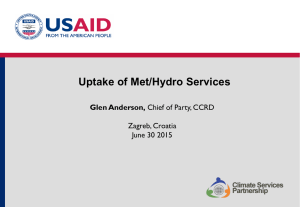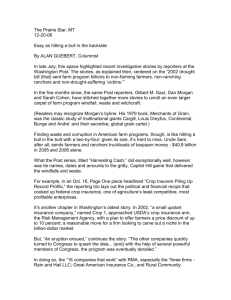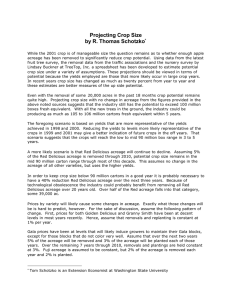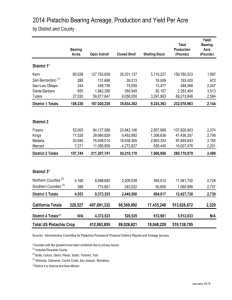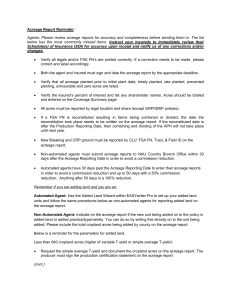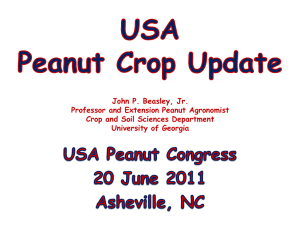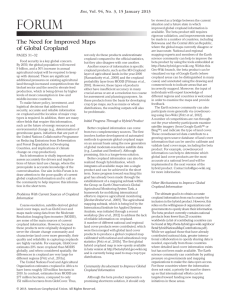Total acreages` response to price is the "REAL" supply response issue
advertisement
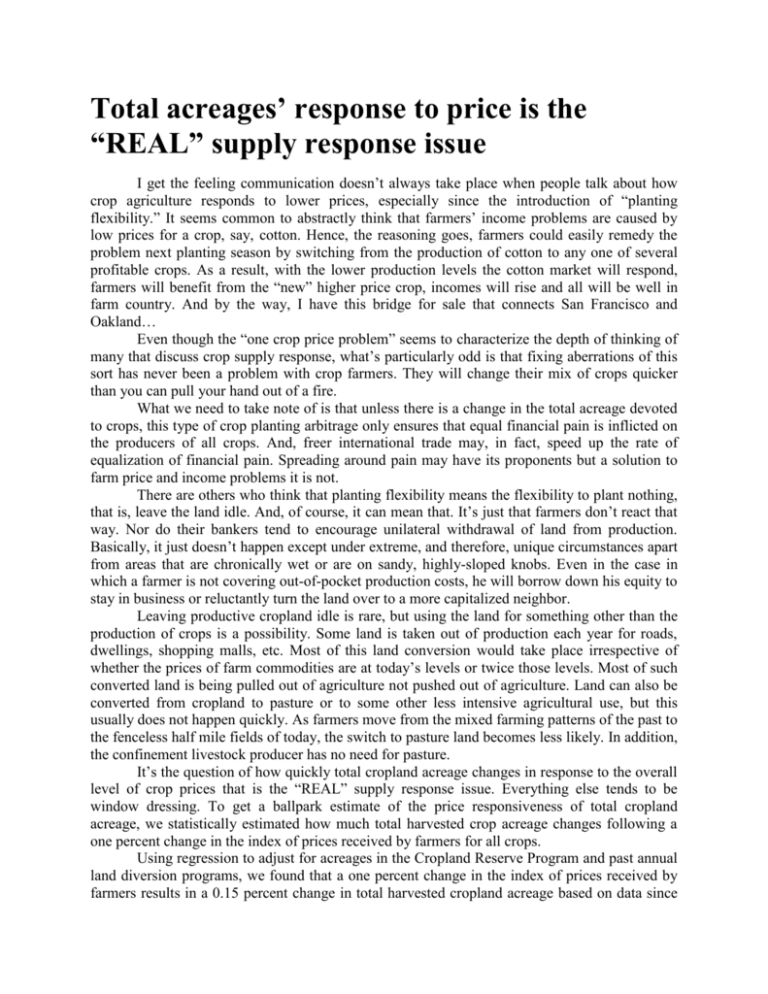
Total acreages’ response to price is the “REAL” supply response issue I get the feeling communication doesn’t always take place when people talk about how crop agriculture responds to lower prices, especially since the introduction of “planting flexibility.” It seems common to abstractly think that farmers’ income problems are caused by low prices for a crop, say, cotton. Hence, the reasoning goes, farmers could easily remedy the problem next planting season by switching from the production of cotton to any one of several profitable crops. As a result, with the lower production levels the cotton market will respond, farmers will benefit from the “new” higher price crop, incomes will rise and all will be well in farm country. And by the way, I have this bridge for sale that connects San Francisco and Oakland… Even though the “one crop price problem” seems to characterize the depth of thinking of many that discuss crop supply response, what’s particularly odd is that fixing aberrations of this sort has never been a problem with crop farmers. They will change their mix of crops quicker than you can pull your hand out of a fire. What we need to take note of is that unless there is a change in the total acreage devoted to crops, this type of crop planting arbitrage only ensures that equal financial pain is inflicted on the producers of all crops. And, freer international trade may, in fact, speed up the rate of equalization of financial pain. Spreading around pain may have its proponents but a solution to farm price and income problems it is not. There are others who think that planting flexibility means the flexibility to plant nothing, that is, leave the land idle. And, of course, it can mean that. It’s just that farmers don’t react that way. Nor do their bankers tend to encourage unilateral withdrawal of land from production. Basically, it just doesn’t happen except under extreme, and therefore, unique circumstances apart from areas that are chronically wet or are on sandy, highly-sloped knobs. Even in the case in which a farmer is not covering out-of-pocket production costs, he will borrow down his equity to stay in business or reluctantly turn the land over to a more capitalized neighbor. Leaving productive cropland idle is rare, but using the land for something other than the production of crops is a possibility. Some land is taken out of production each year for roads, dwellings, shopping malls, etc. Most of this land conversion would take place irrespective of whether the prices of farm commodities are at today’s levels or twice those levels. Most of such converted land is being pulled out of agriculture not pushed out of agriculture. Land can also be converted from cropland to pasture or to some other less intensive agricultural use, but this usually does not happen quickly. As farmers move from the mixed farming patterns of the past to the fenceless half mile fields of today, the switch to pasture land becomes less likely. In addition, the confinement livestock producer has no need for pasture. It’s the question of how quickly total cropland acreage changes in response to the overall level of crop prices that is the “REAL” supply response issue. Everything else tends to be window dressing. To get a ballpark estimate of the price responsiveness of total cropland acreage, we statistically estimated how much total harvested crop acreage changes following a one percent change in the index of prices received by farmers for all crops. Using regression to adjust for acreages in the Cropland Reserve Program and past annual land diversion programs, we found that a one percent change in the index of prices received by farmers results in a 0.15 percent change in total harvested cropland acreage based on data since 1985. So with a 40 percent change in the overall level of crop prices, for example, the estimated change in total harvested acreage would be 6 percent. It is this relationship between changes in overall crop prices and total cropland acreage that should be the focus of discussion about supply response in agriculture. Yes, total acreage does change in the same direction as crop prices, but not by very much. Daryll E. Ray holds the Blasingame Chair of Excellence in Agricultural Policy, Institute of Agriculture, University of Tennessee, and is the Director of the UT’s Agricultural Policy Analysis Center. (865) 974-7407; Fax: (865) 974-7298; dray@utk.edu; http://www.agpolicy.org. Reproduction Permission Granted with: 1) Full attribution to Daryll E. Ray and the Agricultural Policy Analysis Center, University of Tennessee, Knoxville, TN; 2) An email sent to hdschaffer@utk.edu indicating how often you intend on running Dr. Ray’s column and your total circulation. Also, please send one copy of the first issue with Dr. Ray’s column in it to Harwood Schaffer, Agricultural Policy Analysis Center, 310 Morgan Hall, Knoxville, TN 37996-4500.




